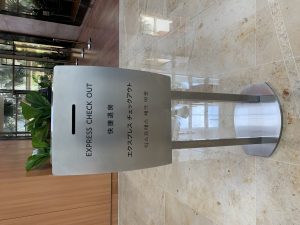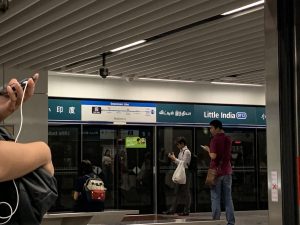Singapore, in terms of a linguistic landscape, is extremely unique and varied. This is actually one of the things I love most about it- the population here is extremely global-minded, internationally aware, and also very considerate of cultural differences. While America may be the 19th century melting pot, I consider Singapore to truly be one of the most globalized cities in the world. One of the aspects of Singapore that reflects this is the language. While the official government language is English, there are actually 4 official languages of the country, which include Mandarin, English, Malay, and Tamil. This fact alone showcases the intercultural landscape of the city, and is seen all throughout the environment from bus signs, announcements on the subway, to the available international snacks sold within the grocery stores. In Singapore, the linguistic landscape is dominated by many different languages due to the multicultural aspect of the city. However, each language has its own connotations within the society but all serve vital functions within the city and are consequently appreciated.
Leeman and Modan, in their investigation of Chinatown in DC and its implications community-wise and space-wise, present a classification system in which public signage is categorized: in terms of language, types of symbolic and ideational meanings communicated, the time period the business/institution was established, and the type of institution that the sign is posted on. I used this framework to examine different examples of signage in Singapore in efforts to deduce what impact it had on the linguistic landscape. I found that the usage of different languages was obvious, with many signs including languages outside of the scope of the 4 official languages in Singapore. There were signs that included Malay, Thai, Chinese, Cantonese, English, French, ect. Additionally, even walking around on the streets to and from work I picked up on different languages that were spoken in conversation, which seems to be the norm and is not uncommon here. For example, the janitor that comes in to clean our office speaks to my supervisor in Malay, which he is most fluent in, and my fellow intern in Mandarin which is the language that she is the most fluent in. However, we all converse in English when talking about work related topics. As evidenced by interactions like these, Singapore creates a thriving environment for a multilingual society.
After spending a month in Singapore, however, I began to pick up on certain differences and connotations that arose when using different languages, and different trends that came with the multilingual culture. Due to the multilinguistic nature of Singapore, as a result, smaller communities have developed, for example little India, little Thailand, ect. There, the signs and linguistic landscape show the organic reflection of the culture of people that reside there, and thus the environment naturally gravitates toward using that language. However, I have noticed that the government street signs are in English. Most signs near more touristy areas, however, are written in many different languages, for example the subway or hotel signs. This is likely due to the amount of tourism from all over that Singapore receives: from surrounding countries, Europe, the States, and many more. However, I have noticed that in some cases in terms of tourism, English is the language marketed to many- all the bus tours and museum descriptions are written in English, and in many touristy places English is the language most commonly found on signs and advertisements. This may be due to the more universal aspect of English in Asia, or it could be the result of catering to a specific tourist group. Additionally, I have found that other languages like Mandarin or Malay signify a more local and authentic culture to Singaporeans, as it is commonly spoken within family settings, hawker centres (which are local food shops) and local attractions rather than tourist places.
The linguistic landscape of Singapore is not clear-cut environment, but rather differing and dynamic. However, this is what makes it extremely interesting from a investigative perspective, is that since there are many different backgrounds and cultures here with a constantly changing environment. Since I have only been in Singapore for a month, I am looking forward to learning and experiencing more about the culture and different intricacies in terms of language.


I always wanted to visit Singapore because I heard that it is a country with a lot of different cultures. I agree that the linguistic landscape in Singapore is very interesting an dynamic! Especially how different cultures mix and blend. Tourism is definitely a big part of why Singapore’s Linguistic Landscape is so differing!
This is really interesting! Singapore has always been a relatively developed country in my mind and I think its history with Malaysia and the decent environment together attracted people from all over the world which makes it a really diverse place.